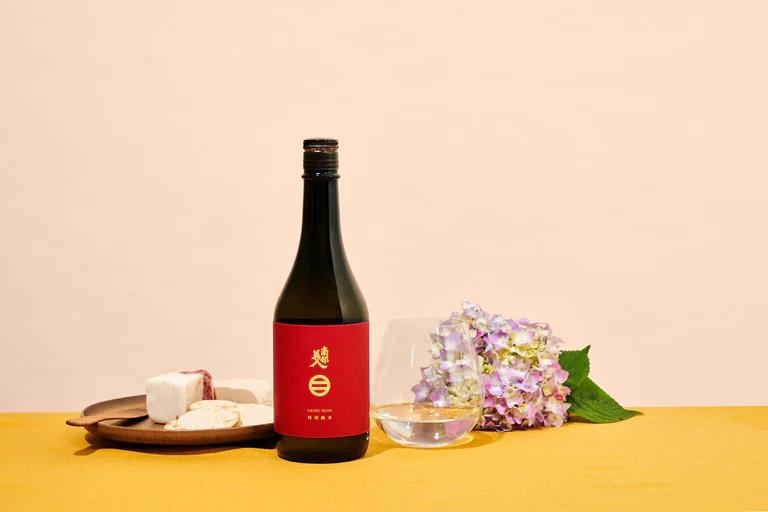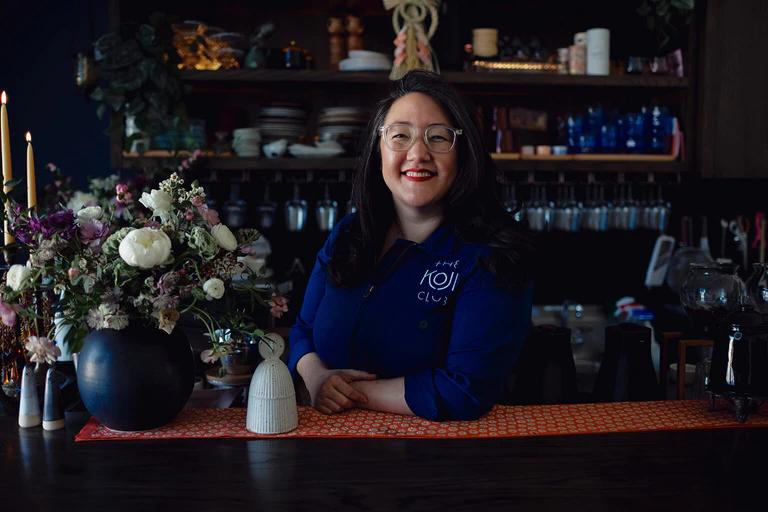Editor’s note: The featured image for this article shows three vials of flower-based yeasts. | Courtesy of Amabuki Brewing Company.
This article originally appeared in the March 2022 edition of our print newsletter, Tippsy Tribune. It has been adjusted slightly for online publication. Become a Tippsy Sake Club member to receive copies of Tippsy Tribune, and read the original articles and other exclusive print content when they are first published.
Sake is made from a few core ingredients: rice, water, yeast, koji and sometimes brewer’s alcohol. Yeast contributes to the aroma, flavors and acidity of sake. It is also temperamental; some ferment well at lower temperatures, some can tolerate environments with higher alcohol content, and some are stronger fermenters.
Back in the olden days, sake brewing was a “let nature do it” affair. What I mean by that is open brewing vessels were colonized by ambient yeast hanging around the brewery. There was no “and now we pitch the yeast” step to sake brewing. Even now, kimoto and yamahai techniques can involve a little ambient yeast, and for breweries like Kinoshita Brewing Company, brewing with ambient yeast is their raison d'être.
But not all yeast is ambient. Let’s explore some of the other options brewers have when making sake.
Choosing sake yeast
Choosing your yeast is another variable in the sake brewing matrix. Once brewers discovered that they could select specific yeast strains to achieve a desired flavor and aroma profile, they opened the door to a new and varied world of sake production.
Cultured yeast
In 1906, yeast from Sakura Masamune was isolated due to the specific qualities of the sake being produced at that brewery. The strain was amplified and then sold to other breweries so that they could use it in their brew. This was the first Association yeast, or “Kyokai kobo.” This process of isolation, culturing and distribution continued as different yeasts from different breweries were identified as having desirable qualities — each getting a new number in the order they were extracted.
Association No. 7 yeast was a turning point for the sake industry. Producing banana and ripe fruit notes on the nose and having lower acidity than its predecessors, this became the junmai yeast. Known as Masumi yeast (after the brewery it came from), this yeast is still popular and tends to have a ripe banana nose.
“Ginjo-zukuri,” the art of making ginjo sake, brings another set of environmental pressures on yeast. Ginjo is brewed cold from highly polished rice, and the rate of starch to sugar conversion is slow. Professor Kinichi Nojiro identified a yeast in 1953 named Kumamoto. This yeast met the criteria for ginjo-zukuri, producing low acidity sake with notes of apple, melon and fresh fruit on the nose. This milestone yeast, Association No. 9, is another popular yeast for ginjo/daiginjo brewing.
Engineered yeast
As you can imagine, a unique yeast that produces desirable qualities can separate one brewery’s sake from the rest. Much experimentation and development goes into crossing and refining yeast cultures. Modern yeasts or “ultra-aromatic yeasts” are selected for the lively notes they produce on the nose. Yeasts like Association No. 1801, which has been in distribution since 2006, can produce very aromatic sake. (The -01 suffix attached to a yeast name indicates that the variety is foamless, which saves room in the fermentation tank and makes the tank easier to clean afterwards. However, foamless yeasts are more difficult for brewers to assess during sake production as opposed to traditional foaming yeast, which they can judge by sight.)
Another award-winning, ultra-aromatic sake yeast is M-310 developed at Meiri Shurui in Ibaraki. It ferments well at low temperatures and produces very strong “ginjo-ka” (ginjo aromas). Other breweries have their own unique yeasts. Saiya Brewing Company in Akita has a commitment to yeast development and uses their own yeasts in the production of Yuki no Bosha sake.
Natural yeast
Sake brewers are also turning to other sources of yeast. Nakao Brewing Company in Hiroshima produces sake brewed from apple yeast (Joto “One with the Clocks”). Amabuki Brewing Company in Saga uses yeast collected from flowers. There are sake being brewed with insect yeasts, collected from bees and wasps. These natural yeasts produce sake with pleasing acidity and unique aromatics.
Blended yeast
Given the diversity of sake yeast, it is no wonder that sake breweries are now blending yeasts to marry different properties. This blending of yeasts allows brewers to produce highly aromatic sake while benefiting from the strong fermentation of another yeast. The selection of the yeast is only part of the equation; how it is used also affects the resulting brew. How you stress the yeast by altering its diet or the temperature of the brew can result in different aromatics.
One drink, many choices
Without yeast, there is no sake. As with sake’s other ingredients, the choices brewers make about which type of yeast to use greatly influence the character of the finished product. The next time you swish sake around in your glass and breathe in the pleasant aroma, think about all the decisions that led up to that satisfying moment.















